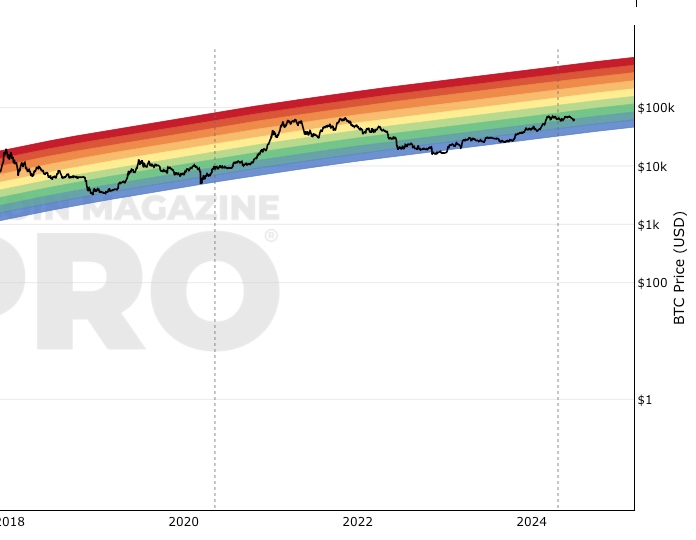Understanding The Great Decoupling: A Comprehensive Guide

Table of Contents
The Great Decoupling refers to the separation of global economic activity and supply chains from their previously highly interconnected state. This decoupling is driven by a confluence of factors, including escalating geopolitical tensions, rapid technological advancements, and a rise in protectionist policies. This article aims to provide a comprehensive understanding of the Great Decoupling, exploring its causes, consequences, and potential future implications for businesses and governments worldwide. We will examine the key drivers, analyze its economic and geopolitical ramifications, and explore strategies for navigating this evolving global landscape.
The Drivers of the Great Decoupling
Several interconnected factors are fueling the Great Decoupling, fundamentally altering the structure of global trade and production.
Geopolitical Tensions and Trade Wars
The increasing friction between major global powers, particularly the US-China trade relationship, has significantly impacted global supply chains. Trade wars, sanctions, and regional conflicts disrupt established trade routes, forcing companies to reassess their sourcing strategies and manufacturing locations.
- Example: The US-China trade war, initiated in 2018, led to tariffs on hundreds of billions of dollars worth of goods, impacting industries ranging from technology to agriculture.
- Impact: This resulted in disruptions to global supply chains, increased costs for businesses, and uncertainty for investors.
- Role of WTO: The World Trade Organization (WTO) has played a crucial role in mediating trade disputes, but its effectiveness has been challenged by rising protectionism and unilateral actions by some nations.
Technological Advancements and Automation
Technological advancements, particularly in automation, artificial intelligence (AI), and 3D printing, are enabling companies to reshore manufacturing and decentralize production. This reduces reliance on geographically distant suppliers and mitigates risks associated with global supply chain disruptions.
- Examples: The automotive industry is increasingly using robots for assembly, while the apparel industry is exploring 3D printing for on-demand production.
- Localized Manufacturing Hubs: The rise of localized manufacturing hubs, driven by automation and advanced technologies, allows for faster production cycles and greater control over quality and supply.
- Labor Market Implications: This shift towards automation has significant implications for labor markets, potentially leading to job displacement in some sectors while creating new opportunities in others.
Rising Protectionism and Nationalism
The rise of protectionist policies, tariffs, and trade barriers is further fragmenting global supply chains. Many nations are prioritizing domestic industries, seeking to reduce dependence on foreign suppliers and strengthen national security.
- Examples: Several countries have implemented tariffs on imported goods, subsidies for domestic producers, and restrictions on foreign investment.
- Impact on International Trade: These protectionist measures have led to a slowdown in global trade growth and increased uncertainty for businesses operating in international markets.
- Regional Trade Agreements: The rise of regional trade agreements, such as the USMCA (United States-Mexico-Canada Agreement) and the CPTPP (Comprehensive and Progressive Agreement for Trans-Pacific Partnership), reflects a shift towards regional economic integration.
Consequences of the Great Decoupling
The Great Decoupling has far-reaching consequences, impacting various aspects of the global economy and geopolitical landscape.
Economic Impacts
The decoupling of global supply chains has significant economic implications.
- Slower Global Growth: The fragmentation of production networks can lead to slower global economic growth due to increased costs, reduced efficiency, and decreased trade flows.
- Impact on Economies: Developed economies may experience some reshoring of manufacturing, while developing economies that rely heavily on exports may face economic challenges.
- Inflationary Pressures: Disruptions to supply chains can lead to increased inflation due to shortages of goods and rising transportation costs.
Geopolitical Ramifications
The Great Decoupling is reshaping global power dynamics and creating new geopolitical fault lines.
- Shift in Global Power: The decoupling process may accelerate the shift in global power away from a unipolar system towards a multipolar one.
- New Alliances & Conflicts: The rise of new regional alliances and economic blocs can increase the potential for both cooperation and conflict among nations.
- Role of Emerging Economies: Emerging economies are increasingly playing a more significant role in global trade and production, challenging the traditional dominance of developed nations.
Social and Environmental Considerations
The social and environmental implications of the Great Decoupling are also significant.
- Labor Market Impacts: Job displacement in certain sectors and the need for new skills in others will require substantial workforce retraining and adaptation.
- Environmental Consequences: Decentralized production may lead to increased carbon emissions if sustainability isn't prioritized.
- Social Inequality: The benefits and costs of the Great Decoupling may not be evenly distributed, leading to potential social inequalities.
Navigating the Great Decoupling: Strategies for Businesses and Governments
Successfully navigating the Great Decoupling requires proactive strategies from both businesses and governments.
Strategies for Businesses
Businesses need to adapt to the changing landscape by:
- Diversifying Supply Chains: Reducing dependence on single suppliers and establishing multiple sourcing options to mitigate risks.
- Investing in Automation & Technology: Adopting advanced technologies to enhance efficiency, reduce costs, and improve resilience.
- Risk Management Strategies: Developing comprehensive risk management plans to identify and address potential disruptions to supply chains.
Governmental Responses
Governments play a critical role in shaping the response to the Great Decoupling:
- Supporting Domestic Industries: Implementing policies that support domestic industries, fostering innovation, and promoting investment in key sectors.
- Promoting International Cooperation: Engaging in international cooperation to address shared challenges and promote a stable global trading system.
- Regulatory Frameworks: Establishing clear regulatory frameworks that encourage innovation, protect consumers, and ensure fair competition.
Conclusion: Understanding the Great Decoupling: Key Takeaways and Future Outlook
The Great Decoupling represents a fundamental shift in the global economic landscape. Driven by geopolitical tensions, technological advancements, and rising protectionism, it is reshaping global supply chains and impacting economic growth, geopolitical stability, and social equity. Understanding these drivers and their consequences is crucial for businesses and governments alike. Deepen your understanding of the Great Decoupling by exploring the latest research and data on global trade and geopolitical trends. Prepare your business for the evolving landscape of the Great Decoupling by implementing strategies for supply chain diversification, technological innovation, and risk management. Stay informed about the future of the Great Decoupling and its impact on your industry and the global economy.

Featured Posts
-
 Txt Saturday Night Lives Role In Counting Crows Rise To Stardom
May 08, 2025
Txt Saturday Night Lives Role In Counting Crows Rise To Stardom
May 08, 2025 -
 10x Bitcoin Multiplier A Chart Of The Week Analysis
May 08, 2025
10x Bitcoin Multiplier A Chart Of The Week Analysis
May 08, 2025 -
 Colin Cowherds Persistent Criticism Of Jayson Tatum Is He Underrated
May 08, 2025
Colin Cowherds Persistent Criticism Of Jayson Tatum Is He Underrated
May 08, 2025 -
 The Hunger Games Directors Stephen King Horror Film Coming In 2025
May 08, 2025
The Hunger Games Directors Stephen King Horror Film Coming In 2025
May 08, 2025 -
 School Hours Altered Psl Matches Affect Lahore Schools
May 08, 2025
School Hours Altered Psl Matches Affect Lahore Schools
May 08, 2025
